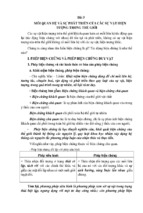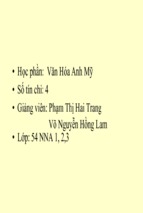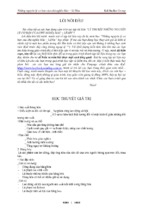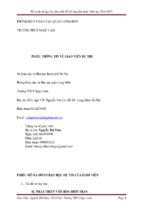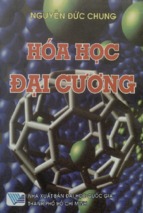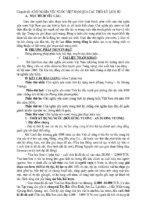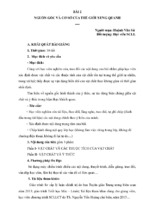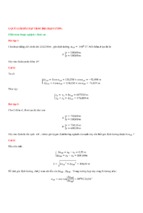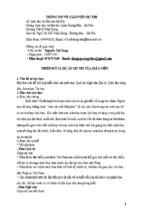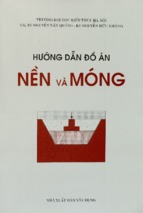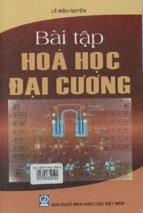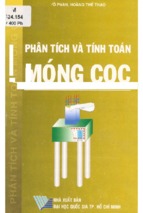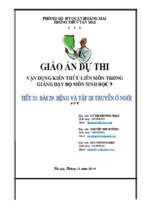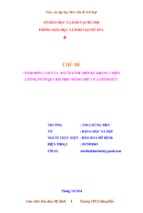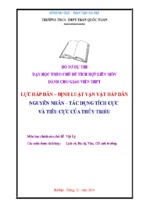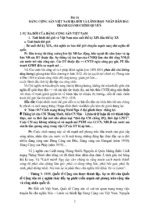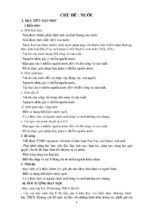d from ascelibrary.org by RMIT UNIVERSITY LIBRARY on 01/04/19. Copyright ASCE. For personal use only; all right
GSP 283
Selected Papers from the Proceedings of Geo-Risk 2017
Geo-Risk 2017
Reliability-Based Design
and Code Developments
Edited by
Jinsong Huang, Ph.D.
Gordon A. Fenton, Ph.D., P.Eng.
Limin Zhang, Ph.D.
D. V. Griffiths, Ph.D., P.E., D.GE
Downloaded from ascelibrary.org by RMIT UNIVERSITY LIBRARY on 01/04/19. Copyright ASCE. For personal use only; all rights reserved.
GEOTECHNICAL
SPECIAL
PUBLICATION
NO.
283
GEO-RISK 2017
RELIABILITY-BASED DESIGN AND CODE
DEVELOPMENTS
SELECTED PAPERS FROM SESSIONS OF
GEO-RISK 2017
June 4–7, 2017
Denver, Colorado
SPONSORED BY
Geo-Institute of the American Society of Civil Engineers
EDITED BY
Jinsong Huang, Ph.D.
Gordon A. Fenton, Ph.D., P.Eng.
Limin Zhang, Ph.D.
D. V. Griffiths, Ph.D., P.E., D.GE
Published by the American Society of Civil Engineers
Downloaded from ascelibrary.org by RMIT UNIVERSITY LIBRARY on 01/04/19. Copyright ASCE. For personal use only; all rights reserved.
Published by American Society of Civil Engineers
1801 Alexander Bell Drive
Reston, Virginia, 20191-4382
www.asce.org/publications | ascelibrary.org
Any statements expressed in these materials are those of the individual authors and do not
necessarily represent the views of ASCE, which takes no responsibility for any statement
made herein. No reference made in this publication to any specific method, product, process,
or service constitutes or implies an endorsement, recommendation, or warranty thereof by
ASCE. The materials are for general information only and do not represent a standard of
ASCE, nor are they intended as a reference in purchase specifications, contracts, regulations,
statutes, or any other legal document. ASCE makes no representation or warranty of any
kind, whether express or implied, concerning the accuracy, completeness, suitability, or
utility of any information, apparatus, product, or process discussed in this publication, and
assumes no liability therefor. The information contained in these materials should not be used
without first securing competent advice with respect to its suitability for any general or
specific application. Anyone utilizing such information assumes all liability arising from such
use, including but not limited to infringement of any patent or patents.
ASCE and American Society of Civil Engineers—Registered in U.S. Patent and Trademark
Office.
Photocopies and permissions. Permission to photocopy or reproduce material from ASCE
publications can be requested by sending an e-mail to
[email protected] or by locating a
title in ASCE's Civil Engineering Database (http://cedb.asce.org) or ASCE Library
(http://ascelibrary.org) and using the “Permissions” link.
Errata: Errata, if any, can be found at https://doi.org/10.1061/9780784480700
Copyright © 2017 by the American Society of Civil Engineers.
All Rights Reserved.
ISBN 978-0-7844-8070-0 (PDF)
Manufactured in the United States of America.
Geo-Risk 2017 GSP 283
iii
Downloaded from ascelibrary.org by RMIT UNIVERSITY LIBRARY on 01/04/19. Copyright ASCE. For personal use only; all rights reserved.
Preface
Interest and use of probabilistic methods and risk assessment tools in geotechnical engineering has grown
rapidly in recent years. The natural variability of soil and rock properties, combined with a frequent lack
of high quality site data, makes a probabilistic approach to geotechnical design a logical and scientific
way of managing both technical and economic risk. The burgeoning field of geotechnical risk assessment
is evidenced by numerous publications, textbooks, dedicated journals and sessions at general geotechnical
conferences. Risk assessments are increasingly becoming a requirement in many large engineering
construction projects. Probabilistic methods are also recognized in design codes as a way of delivering
reasonable load and resistance factors (LRFD) to target allowable risk levels in geotechnical design.
This Geotechnical Special Publication (GSP), coming out of the Geo-Risk 2017 specialty conference held
in Denver, Colorado from June 4-7, 2017, presents contributions in sessions: 1) Reliability- and RiskBased Code Developments, 2) Probabilistic Methods and Reliability Analysis, 3) Performance-Based
Liquefaction Assessment and Mitigation, 4) Probabilistic Performance and Resilience Assessment, and 5)
Load and Resistance Factor Design (LRFD) Developments and Applications.
These contributions to the use of reliability based design methodologies and to reliability based code
developments in geotechnical practice are very timely, and will provide a valuable and lasting reference
for practitioners and academics alike.
The editors would like to thank all of the members of ASCE Geo Institute’s Technical Committee on Risk
Assessment and Management and the Engineering Practice of Risk Assessment and Management
Committee (TC304) of the International Society of Soil Mechanics and Geotechnical Engineering
(ISSMGE) for their ongoing support.
All the papers in this GSP went through a rigorous review process. The contributions of the reviewers are
much appreciated.
The Editors
Jinsong Huang, Ph.D., M.ASCE, University of Newcastle, NSW, Australia
Gordon A. Fenton, Ph.D., P.Eng., FEIC, FCAE, M.ASCE, Dalhousie University, Halifax, Canada
Limin Zhang, Ph.D., F.ASCE, Hong Kong University of Science and Technology, PR China
D.V. Griffiths, Ph.D., P.E., D.GE, F.ASCE, Colorado School of Mines, Golden, CO, USA
© ASCE
Geo-Risk 2017 GSP 283
iv
Downloaded from ascelibrary.org by RMIT UNIVERSITY LIBRARY on 01/04/19. Copyright ASCE. For personal use only; all rights reserved.
Acknowledgments
The following individuals deserve special acknowledgment and recognition for their efforts in making
this conference a success
•
•
•
•
•
•
Conference Chair: D.V. Griffiths, Colorado School of Mines, Golden, Colorado, USA
Conference Co-Chair: Gordon A. Fenton, Dalhousie University, Halifax, Canada
Technical Program Chair: Jinsong Huang, University of Newcastle, NSW, Australia
Short-Courses: Limin Zhang, Hong Kong University of Science and Technology
Student Program co-Chairs: Zhe Luo, University of Akron; Jack Montgomery, Auburn University
Sponsorships and Exhibits Chair: Armin Stuedlein, Oregon State University
The Editors greatly appreciate the work of Ms. Helen Cook, Ms. Leanne Shroeder, Ms. Brandi Steeves,
and Mr. Drew Caracciolo of the ASCE Geo-Institute for their administration of many important
conference organizational issues, including management of the on-line paper submissions, the conference
web site and sponsorship.
© ASCE
Geo-Risk 2017 GSP 283
v
Contents
Downloaded from ascelibrary.org by RMIT UNIVERSITY LIBRARY on 01/04/19. Copyright ASCE. For personal use only; all rights reserved.
Advances in Geotechnical Reliability-Based Design
Calculation of Equivalent Number of Uniform Cycles as Basis for
Magnitude Scaling Effects in Liquefaction Risk Models ........................................ 1
Anthony Dombrowski, Lisa Star, and Luis G. Arboleda-Monsalve
Effects of Small Variability of Soil Density on the
Consequences of Liquefaction ................................................................................. 11
Mohamed A. ElGhoraiby, Majid T. Manzari, and Samer Hamdar
Numerical Evaluation of Fragility Curves for
Earthquake-Liquefaction-Induced Settlements of an Embankment ................... 21
C. Khalil, I. Rapti, and F. Lopez-Caballero
Performance Comparison of Probabilistic and Deterministic Liquefaction
Triggering Models for Damage Assessment in 23 Global Earthquakes .............. 31
Brett W. Maurer, Russell A. Green, Sjoerd van Ballegooy, Brendon A. Bradley,
and Sneha Upadhyaya
Regional Liquefaction Mapping Accounting for Multiscale Spatial
Variability of Soil Parameters with Geological Constraints................................. 43
Chaofeng Wang, Qiushi Chen, and C. Hsein Juang
Response of Fena Dam to the 1993 Guam Earthquake......................................... 54
Lelio H. Mejia
Riverine Levee Upgrades against Liquefaction and Seismic Impact with
Double Sheet Pile Walls and Deep Soil Cement Mix Columns ............................ 67
Takefumi Takuma
Site Response in Liquefiable Layered Deposits Considering Spatial
Variability in Hydraulic Conductivity .................................................................... 76
Raniero Beber and Shideh Dashti
A Practical HLRF Algorithm for Slope Reliability Analysis................................ 86
Jian Ji and Jayantha Kodikara
Application of Metamodelling Techniques in the Context of Geotechnical
Reliability-Based Analysis........................................................................................ 99
Sónia H. Marques
© ASCE
Geo-Risk 2017 GSP 283
Application of Quasi-Newton Approximation-Based SORM for System
Reliability Analysis of a Layered Soil Slope ......................................................... 111
Peng Zeng, Rafael Jimenez, Tianbin Li, Yu Chen, and Xianda Feng
Downloaded from ascelibrary.org by RMIT UNIVERSITY LIBRARY on 01/04/19. Copyright ASCE. For personal use only; all rights reserved.
Auxiliary Random Finite Element Method for Risk Assessment of 3-D
Slope ......................................................................................................................... 120
Te Xiao, Dian-Qing Li, Zi-Jun Cao, Siu-Kui Au, and Xiao-Song Tang
Investigating the Influence of Conditional Simulation on Small-Probability
Failure Events Using Subset Simulation............................................................... 130
Bram van den Eijnden, Michael A. Hicks, and Philip J. Vardon
Methods for Probabilistic Seismic Levee System Reliability Analysis .............. 140
Dong Youp Kwak, Ruben Jongejan, Paolo Zimmaro, Scott J. Brandenberg,
and Jonathan P. Stewart
Model Uncertainties for the Static Design of Square Foundations on
Sand under Axial Compression ............................................................................. 151
Chong Tang, Kok-Kwang Phoon, and Sami O. Akbas
Serviceability Limit State Reliability Analysis of Perniö Railway
Embankment ........................................................................................................... 161
Monica S. Löfman and Leena K. Korkiala-Tanttu
Assessing the Performance of Shield Tunnels Due to Corrosion Using
Bayesian MCMC ..................................................................................................... 172
Zhongkai Huang, Dongmei Zhang, and Hongwei Huang
Case Study: Excavation Adjacent to High Pressure Natural Gas
Transmission Pipelines—A Risk Management Approach .................................. 184
Maria J. Lobo, Scott Newhouse, and Wayne R. Bergstrom
Closed Cavity Thin-Wall Components Design for Prefabricated
Underground Subway Structures ......................................................................... 194
Xiuren Yang and Yuzhen Han
Geotechnical Engineering Challenges in the Path to Resilient
Infrastructure .......................................................................................................... 206
Sissy Nikolaou, Nonika Antonaki, Rallis Kourkoulis, Fani Gelagoti,
Irene Georgiou, and George Gazetas
Interaction of Performance and Construction Risk While Testing Runway
Subgrade Using Non-Destructive Methods .......................................................... 216
Kevin Foye and Alvaro Ulloa
© ASCE
vi
Geo-Risk 2017 GSP 283
Parametric Study on Slope Stability Using Recycled Plastic Pin ....................... 226
Mohammad Sadik Khan, Sahadat Hossain, Asif Ahmed, Kelli Greenwood,
and Aya Shishani
Downloaded from ascelibrary.org by RMIT UNIVERSITY LIBRARY on 01/04/19. Copyright ASCE. For personal use only; all rights reserved.
Probabilistic Assessment and Prediction of Shield Tunnel Performance ......... 237
Y. J. Zhang, D. M. Zhang, and H. W. Huang
Resilience Analysis of Metro Networks: A Case Study of Shanghai Metro
Network ................................................................................................................... 247
Fei Du, Hongwei Huang, Dongming Zhang, and Fan Zhang
Selecting Minimum Factors of Safety for 3D Slope Stability Analyses ............. 259
T. D. Stark and D. G. Ruffing
Load and Resistance Factor Design (LRFD) Developments and Applications
Design of Laterally Loaded Piles—Limits of Limit State Design?..................... 267
Kerstin Lesny
Development of Reliability Based Design and Acceptance Protocol for
Pile Foundations in Arkansas ................................................................................ 277
Joseph Jabo
Evaluation of CALTRANS Design Methods for Steel Pipe Piles ....................... 287
Yujie Hu, Xinbao Yu, and Murad Abu-Farsakh
From ASD to Reliability Based LRFD of Geotechnical Structures:
Learning from Pioneers and Experts through Videos and Webinars ............... 296
Jiliang Li and Masoud Mojtahed
Recent Development of Load and Resistance Factor Design (LRFD) for
Driven Piles on Soft Rock....................................................................................... 307
Kam W. Ng and Todd Sullivan
Selecting the Right Foundation for Energy Delivery Structures:
What Are the Challenges and How Can They Be Overcome? .............................. 317
Haijian Shi and Richard Steeg
Site-Specific Geotechnical Resistance Factors for a Large Industrial
Project in Canada ................................................................................................... 329
Peter Thomson, Dennis Becker, Gennaro Esposito, and Jim J. Wright
Use of Monte Carlo Analysis to Optimize the Calculated Resistance of
Driven Micropiles ................................................................................................... 341
Roberto Valentino and Davide Stevanoni
© ASCE
vii
Geo-Risk 2017 GSP 283
viii
Reliability- and Risk-Based Code Developments
A Simple Reliability-Based Procedure for Seismic Geotechnical Design .......... 352
Vincenzo Pane, Alessia Vecchietti, and Manuela Cecconi
Downloaded from ascelibrary.org by RMIT UNIVERSITY LIBRARY on 01/04/19. Copyright ASCE. For personal use only; all rights reserved.
An Analytical Approach of Geotechnical Reliability-Based Design and
Its Application ......................................................................................................... 364
Wenjun Dong
Calibration of Safety Factors for Piping Failure Mechanism in Levees ........... 374
Ana Teixeira, Karolina Wojciechowska, Wouter L. A. ter Horst, and Marcel Bottema
Challenges in Applying Fixed Partial Factors to Rock Engineering Design ..... 384
William Bjureland, Johan Spross, Fredrik Johansson, Anders Prästings,
and Stefan Larsson
Cost-Effective Design of Long Spatially Variable Soil Slopes Using
Conditional Simulation .......................................................................................... 394
Yajun Li, Michael A. Hicks, and Philip J. Vardon
Design Optimization of Piled-Raft Foundation for Tall Wind Turbine on
Clayey Soil ............................................................................................................... 403
Shweta Shrestha, Nadarajah Ravichandran, and Parishad Rahbari
Discussion on Imprecise Probabilistic Approaches Applied to the
Eurocode 7 Partial Factor Design ......................................................................... 413
Sónia H. Marques
Discussion on Robustness in the Context of Eurocode 7 Partial Factor
Design ....................................................................................................................... 425
Sónia H. Marques
Evaluation of the Uncertainties Related to the Geotechnical Design
Method and Its Consideration in Reliability Based Design ................................ 435
Kerstin Lesny, Sami Akbas, Witold Bogusz, Sébastien Burlon, Giovanna Vessia,
and Limin Zhang
Impact of Resistance Distribution Selection on Foundation Reliability in
Consideration of Lower-Bound Limits ................................................................. 445
Seth C. Reddy and Armin W. Stuedlein
Insights from Reliability-Based Design in Geotechnical Engineering ............... 459
B. K. Low and K. K. Phoon
Probabilistic Design of Slopes in Normally Consolidated Clays ........................ 471
Desheng Zhu, D. V. Griffiths, Jinsong Huang, and Gordon A. Fenton
© ASCE
Geo-Risk 2017 GSP 283
Reliability Analysis of Foundation Settlement in Nigeria Based on
Standard Penetration Test Results........................................................................ 480
Salahudeen A. Bunyamin, Ijimdiya S. Thomas, Eberemu O. Adrian,
and Osinubi J. Kolawole
Downloaded from ascelibrary.org by RMIT UNIVERSITY LIBRARY on 01/04/19. Copyright ASCE. For personal use only; all rights reserved.
Reliability Updating with Survival Information for Dike Slope Stability
Using Fragility Curves ........................................................................................... 494
Timo Schweckendiek, Mark G. van der Krogt, Ana Teixeira, Wim Kanning,
Rob Brinkman, and Katerina Rippi
Reliability-Based Performance Assessment of Bioreactor Landfills Using
Coupled Hydro-Bio-Mechanical Framework ...................................................... 504
Girish Kumar and Krishna R. Reddy
Revision of “The Technical Standard for Port and Harbor Structures”
Based on LRFD ....................................................................................................... 514
Masahiro Takenobu, Masafumi Miyata, Yusuke Honjo, Yu Otake, Takehiko Sato,
and Satoshi Nishioka
Risk-Based Approach in Geotechnical Design ..................................................... 524
Ramanujachari Kannan
Search for the Worst-Case Correlation Length in the Bearing Capacity
Probability of Failure Analyses ............................................................................. 534
W. Puła, J. M. Pieczyńska-Kozłowska, and M. Chwała
Seismic Earth Pressure Reliability Analysis ........................................................ 545
Robb Eric S. Moss
Stochastic Analysis of Levee Stability Subject to Variable Seepage
Conditions ................................................................................................................ 554
Robert Lanzafame, Henry Teng, and Nicholas Sitar
© ASCE
ix
Geo-Risk 2017 GSP 283
Calculation of Equivalent Number of Uniform Cycles as Basis for Magnitude
Scaling Effects in Liquefaction Risk Models
Anthony Dombrowski, S.M.ASCE1; Lisa Star, Ph.D., M.ASCE2; and Luis G. ArboledaMonsalve, Ph.D., M.ASCE3
Downloaded from ascelibrary.org by RMIT UNIVERSITY LIBRARY on 01/04/19. Copyright ASCE. For personal use only; all rights reserved.
1
Graduate Research Assistant, Dept. of Civil Engineering and Construction Engineering
Management, California State Univ., Long Beach, CA 90840. E-mail:
[email protected]
2
Assistant Professor, Dept. of Civil Engineering and Construction Engineering Management,
California State Univ., Long Beach, CA 90840. E-mail:
[email protected]
3
Assistant Professor, Dept. of Civil Engineering and Construction Engineering Management,
California State Univ., Long Beach, CA 90840. E-mail:
[email protected]
Abstract
The seismic demand imposed by a ground motion is related to its amplitude and duration, where
greater demand placed on the soil increases the probability that liquefaction is triggered and that
its effects will be damaging. Historically, the seismic demand imposed by an arbitrary ground
motion was quantified by describing a uniform series of shear stress cycles that caused an
equivalent likelihood of liquefaction. The amplitude of the ground motion is usually represented
by the Cyclic Stress Ratio (CSR), and the effects of the duration of ground shaking have usually
been represented through an equivalent number of uniform amplitude cycles (N) or through the
related magnitude scaling factor (MSF). We review methods used to determine N, as well as
important factors known to influence the evaluation of N such as: the weight given to cycles of
different amplitudes through the cycle sequence, non-zero crossings, multidirectional shaking,
and soil and site conditions. Discrepancies between the current cycle counting methods and the
known influential factors are identified. A cycle counting routine is proposed, and we apply it to
a small suit of records in the NGA-West2 ground motion database with results presented.
INTRODUCTION
The development of seismic soil liquefaction triggering and consequence models depend on
measures of seismic demand. In laboratory testing, quantifying the demand of cyclic loads
placed on soils has been achieved through a measure of the amplitude of the loading, the cyclic
stress ratio (CSR), and a measure of the number of loading cycles.
When evaluating the loading demands from an arbitrary ground motion, the
quantification of amplitude and duration becomes necessarily more complicated. Seed et. al
(1975) defined the cyclic stress ratio for an arbitrary acceleration record and developed the
Cyclic Resistance Ratio (CRR), defined as the CSR required to initiate liquefaction of an
earthquake with a Magnitude (M) equal to 7.5. The factor of safety against liquefaction (FSL) is
defined as:
© ASCE
1
Geo-Risk 2017 GSP 283
2
Downloaded from ascelibrary.org by RMIT UNIVERSITY LIBRARY on 01/04/19. Copyright ASCE. For personal use only; all rights reserved.
FS =
.
∗
(1)
where MSF is the magnitude scaling factor, accounting for the decreased resistance to
liquefaction for large magnitude earthquakes with large numbers of cycles, and the increased
resistance to liquefaction for smaller magnitude, shorter duration, earthquakes.
A number of studies have investigated magnitude scaling factors based directly on
empirical liquefaction data from case histories. Ambraseys (1988), Andrus and Stokoe (1997),
Youd and Noble (1997), and Cetin et al. (2004) assessed case histories where liquefaction was
either evident or absent, the latter two using probabilistic methods, in order to regress a
relationship between MSF and Mw.
An alternative or complimentary way to quantify the duration of an arbitrary seismic load
is through the equivalent number of uniform stress cycles (N) concept. Arango (1996) used
energy principles to analyze liquefaction triggering at distant sites, and suggested that scaling
factors based on N had less scatter than scaling factors based on earthquake magnitude. There
have been a large number of procedures proposed to calculate N, and one of the most important
factors being how to weigh cycles with different amplitudes. Seed et al. (1975) proposed that N
could be evaluated for an arbitrary ground motion using weighting factors based on the
Palmgren–Miner (P–M) cumulative damage hypothesis.
Magnitude scaling factors proposed and updated by Seed et al. (1975), Seed and Idriss
(1982), Idriss (1997), Idriss (1999), Idriss and Boulanger (2008) and Boulanger and Idriss (2014)
were based on laboratory derived relationships between scaling factors and number of cycles. N
values were correlated with earthquake magnitude to develop the final proposed scaling factors.
Idriss and Boulanger (2008) and Boulanger and Idriss (2014) showed that the magnitude scaling
factors were dependent not just on magnitude, but also on plasticity and soil conditions, with the
relationship between the scaling factor and magnitude being stronger for clean sands compared
to clayey soils and stronger for soils with a high penetration resistance compared to low.
Liu et al. (2001) used the results of Arango (1996) along with updated laboratory testing
results in order to develop updated recommendations for determining N from an arbitrary ground
motion. Liu et al. (2001) developed scaling factors, and additionally used random effects
regression analysis to develop empirical prediction equations for N, based on magnitude, site
distance, site conditions and rupture directivity effects.
Hancock and Bommer (2005) reviewed the large number of different procedures that
have been proposed for determining N from an arbitrary ground motion, and Stafford and
Bommer (2009) presented empirical prediction equations for N, based on magnitude, distance,
and site classification. They found that the counting method used to determine N has an effect on
both the predicted value and the variance.
Cetin and Bilge (2012a) showed that scaling factors are sensitive to the definition of the
onset of liquefaction, as well as soil parameters.
The objective of this paper is to review methods used to determine the equivalent number
of uniform cycles and identify important factors that affect the evaluation. We apply a
preliminary cycle counting routine accounting for these influence factors to small suit of records
in the NGA-West 2 ground motion database and study the results.
© ASCE
Geo-Risk 2017 GSP 283
Downloaded from ascelibrary.org by RMIT UNIVERSITY LIBRARY on 01/04/19. Copyright ASCE. For personal use only; all rights reserved.
WEIGHTING FACTOR CURVES
Equivalent uniform cycle counting methods for liquefaction analysis have their basis in material
fatigue evaluation and the Palmgren-Miner (P-M) (Pamgren, 1924, and Miner, 1945) cumulative
damage hypothesis. P-M damage analysis assumes linear damage accumulation. This allows the
development of direct relationships between the damage (or progress towards liquefaction)
caused by earthquake cycles of different amplitudes. Weighting factors can be used in order to
develop a weighted sum of the cycles in a ground motion.
Soil that is subjected to loading with a uniform peak cyclic shear stress amplitude
(τcyc),will liquefy after a number of cycles are applied (Nliq). τcyc is found to be normalizable by
the vertical effective stress prior to shaking, to provide the cyclic stress ratio, CSR. The test is
repeated at different levels of stress with different N values being recorded. The tests are then
compiled and a complete CSR-Nliq curve is created. By normalizing CSR by the CSR at a
reference level, which is usually taken to be 65% of the CSR where one cycle of loading will
cause liquefaction, and normalizing the number of cycles required to liquefy the soil at that
reference level by Nliq, CSR-Nliq curves provide the basis for computing weighting factors.
The weighting factors used to calculate N for an arbitrary ground motion as developed by
Seed et al. (1975) were based on laboratory test results by De Alba et al. (1976). Idriss (1997)
developed updated weighting factor curves based on laboratory tests by Yoshimi et al. (1984).
Lui et al. (2001) used both laboratory data and field based data from Arango (1996). All assumed
that the relationship between CSR-Nliq is linear in log-log space. Green and Terri (2005)
proposed an alternative method for determining weighting factors, using energy dissipation of
the soil to account for nonlinear stress-strain behavior of soil subjected to larger amplitude
shaking.
Researchers have found that the shape of the CSR-Nliq curves depended on a number of
soil properties and conditions. Relative density was identified as early as De Alba et al (1975) as
a factor. CSR-Nliq curves tend to be steeper for soils with high relative density and flatter for
soils with low relative density. Lui et al. (2001) accounted for this by using an average curve for
the relative density range of most interest for liquefaction studies, to calculate their laboratory
based scaling factors. Boulanger and Idriss (2014) use penetration resistance as a proxy for
relative density.
Soils subjected to loads that induce strains smaller than the threshold shear strain, do not
accumulate damage, or progress towards liquefaction. The threshold shear strain thus plays an
import role in determining the location of the fatigue limit (or lower boundary) of the CSR-Nliq
curves for a given soil. The threshold shear strain depends on soil plasticity, with a higher
threshold for clays versus sands. The location of the fatigue limit of the CSR-Nliq curve also
depends on the stress-strain relationship of the soil, which is sensitive to the stiffness and density
of the soil. Most cycle counting methods do not explicitly account for the threshold shear strain,
although some use a low amplitude cut-off based on the relative cycle amplitude.
Laboratory testing by Tatsuoka et al (1986) and Mulilis et al. (1977) indicate that soil
fabric has an effect on the CSR-Nliq curve, based on testing of soils with different sample
preparation techniques. The average behavior of the soil for different sample preparation
methods is generally considered.
© ASCE
3
Downloaded from ascelibrary.org by RMIT UNIVERSITY LIBRARY on 01/04/19. Copyright ASCE. For personal use only; all rights reserved.
Geo-Risk 2017 GSP 283
Boulanger and Idriss (2014) reviewed a variety of laboratory testing studies and found
that fines content and plasticity do not have consistent effects on the slope or shape of the CSRNliq curves.
The onset of liquefaction has sometimes been defined as the time when the excess pore
water pressure ratio, ru, at the end of a cycle is equal to 1.0. However, other definitions of
liquefaction onset have been proposed including lower thresholds for ru, and single or double
amplitude strain based definitions. Cetin and Bilge (2012a) showed that because of the nonlinear
accumulation of liquefaction damage at different CSR levels, whether it is measured through
pore pressure or strain, the definition of the onset of liquefaction will change the shape of the
CSR-Nliq curve. Boulanger and Idriss (2014) using data from Tatsuoka et al. (1986) showed that
the CSR-Nliq curves become particularly nonlinear when using large strain definitions of
liquefaction onset.
NON-LINEAR LOAD DEPENDENT DAMAGE
The P-M hypothesis assumes linear damage accumulation. Damage, or progress towards soil
liquefaction, is implicitly assumed to increase linearly as the number of cycles approaches Nliq,
conveniently allowing us to define a direct relationship between cycles at different stress levels,
through the weighting factors.
As shown in Figure 1, laboratory testing indicates that there is a non-linear relationship
between the number of loading cycles and residual pore pressure accumulation (e.g. Seed et al,
1975, Polito et al., 2008, Cetin and Bilge, 2012b). Polito et al. (2008) and Cetin and Bilge
(2012b) showed that the non-linear relationship varies depending on CSR, relative density,
nonplastic fines content, and vertical consolidation stress. Laboratory testing of soils using nonuniform cyclic loading has indicated that the order of cycles with different amplitudes may affect
the pore pressure generation. No current liquefaction cycle counting methods account for
nonlinear damage accumulation, and thus they cannot account for the load-sequence effects.
Figure 1: Laboratory data showing range of pore pressure generation curves (from Cetin
and Bilge, 2012b)
© ASCE
4
Downloaded from ascelibrary.org by RMIT UNIVERSITY LIBRARY on 01/04/19. Copyright ASCE. For personal use only; all rights reserved.
Geo-Risk 2017 GSP 283
Although this issue has not been addressed in liquefaction analysis, this has been a
recognized problem in the field of metal fatigue. Marco and Starkey (1954) proposed the first
non-linear damage theory. As shown in Figure 2, they proposed a power relationship between
damage and normalized number of cycles, with different damage curves depending on the
applied stress level. This means that, unlike when assuming linear damage accumulation, the
order in which cycles of different amplitudes are applied is critical for determining progress
towards soil liquefaction. It also means that weighting factors are not static throughout the
loading sequence. Some cycle counting methods rearrange cycles or portion of cycles before
determining cycle amplitudes, so in the following section we review cycle counting methods that
preserve the arrangement of counted cycles.
Figure 2: Schematic representation of Marco-Starkey theory (from Fatemi and Yang,
1998)
CYCLE COUNTING METHODS
There are a variety of different cycle counting methods that have been proposed in order to
determine the equivalent number of uniform cycles for use in liquefaction or other fatigue
studies. Hancock and Bommer (2005) present an extensive review of these methods. We will
focus on two methods.
All methods use one of two definitions to identify and quantify loading cycles: either the
cycle amplitude or the cycle range. The cycle amplitude is determined by measuring from the
origin to the peak or valley. Two peaks are required for one full cycle. The cycle range is defined
as the distance from the peak to a valley, or vice versa. One full cycle will have an amplitude
equal to half of the range.
Peak-counting methods have traditionally been used in liquefaction analysis. These
methods work by seeking each peak (or valley) in the data and recording the amplitude.
© ASCE
5
Downloaded from ascelibrary.org by RMIT UNIVERSITY LIBRARY on 01/04/19. Copyright ASCE. For personal use only; all rights reserved.
Geo-Risk 2017 GSP 283
Weighting factors can then be applied for each recorded cycle. There have been various
recommendations about how to consider non-zero crossing cycles. A non-zero crossing cycle is a
cycle that has a reversal before reaching the origin. Some counting cycle methods will define a
cycle as whenever a reversal occurs regardless of if the first cycle reaches zero or not, while
other cycle counting methods will define a cycle as whenever a reversal occurs after crossing the
zero amplitude.
The most common range counting method is known as the rainflow-counting method.
Half and full cycles are counted based on ranges from the peak to the valley or valley to the
peak. Green and Terri (2005) suggest that a range-counting method is preferred because the
range is more closely tied to the shape of stress-strain loops. An additional benefit of the
rainflow-counting method is that cycles are accounted for, regardless of zero-crossing.
MULTIDIRECTIONAL SHAKING
Ground motions are measured using three-directional accelerometer data, but cycle counting
procedures are based on examining one set of peaks. The three sets include one in the vertical
direction and two in the horizontal direction. Because cycle and range counting methods only
work on one load cycle record, all cycle counting procedures require some method to combine
the information from the original records.
Most liquefaction analysis methods disregard the vertical ground motion. Liu et al.
(2001) presented several methods of normalizing and combining the two horizontal ground
motions. The geometric mean of the time series is calculated as the square root of the product of
the two horizontal acceleration values. This measure has the disadvantage that the results are
affected by the original orientation of the accelerometers in the field. This could be overcome by
using the 50th percentile period dependent rotated geometric mean of the time series (GMrotD50)
presented by Boore et al. (2006). Liu et al. (2001) recommended using a second proposed
method, the vector sum of the two components, which is calculated as the square root of the sum
of the two horizontal acceleration values squared. Both methods have the disadvantage that the
absolute sign of the peaks is lost, disallowing the use of range counting methods.
Instead of combining the two horizontal ground motions, Seed et al. (1975) treated each
component separately. When determining the weighting factors, a decision then needs to be
made about whether to calculate the factors relative to the peak acceleration from each record
independently or whether to use the largest peak between both records. Laboratory testing by
Ishihara and Yamazaki (1980) indicate that fewer loading cycles are required to liquefy soils
subjected to multidirectional loading compared to soils with unidirectional shaking. Seed (1976)
showed that the ratio of CSR for multidirectional shaking to CSR for unidirectional shaking with
the same Nliq, is about 0.9.
Green and Terri (2005) also suggested treating each component separately. In order to be
consistent with field based estimations of CSR, they recommend calculating the weighting
factors based on the peak of the geometric mean of the two ground components, and using one
half of the total number of cycles calculated from evaluating both records.
© ASCE
6
Geo-Risk 2017 GSP 283
7
Downloaded from ascelibrary.org by RMIT UNIVERSITY LIBRARY on 01/04/19. Copyright ASCE. For personal use only; all rights reserved.
PROPOSED METHOD FOR CALCULATION OF EQUIVALENT NUMBER OF
UNIFORM CYCLES AND PRELIMINARY RESULTS
In the following section we propose a preliminary method for calculating the equivalent number
of uniform cycles from an arbitrary ground motion.
Initial weighting factors are estimated using a similar method to that presented by Green
and Terri (2005) with modulus reduction and damping curves by Darendeli (2001). The
weighting factors are normalized by the 50th percentile period dependent rotated geometric mean
peak horizontal acceleration based on the two horizontal ground motion components. Cycle
counts and stress ranges were determined using the rainflow counting procedure. For each cycle
counted, the weighting factor is applied, and then the nonlinear damage accumulation is
calculated, after the manner of the Marco-Starkey theory, using nonlinear ru-N relationships by
Cetin and Bilge (2012b).
Five ground motions used in this study were selected from the PEER NGA-West 2
database (http://peer.berkeley.edu/ngawest2/). For each record, the earthquake moment
magnitude (Mw), rupture distance (Rup), and shear wave velocity of top 30 m (Vs30) are given in
Table 1.
Table 1: Ground Motions used in First Sensitivity Testing
Moment
Magnitude
(Mw)
Rrup (km)
Vs30 (m/s)
Northridge-01-Lakewood
(Del Amo Blvd)
6.69
56.91
267.35
Northridge-01-Inglewood
(Union Oil)
6.69
42.2
316.02
Whittier Narrows-02
Anahiem (Ball Rd.)
5.27
30.42
269.29
Morgan Hill-Fremont
(Mission San Jose)
6.19
31.34
367.57
Landers-Big Bear Lake
(Civic Center)
7.28
45.48
430.36
Earthquake NameStation Name
Figure 3 shows the equivalent number of uniform cycles calculated using the proposed
method superimposed against estimates of N as a function of distance and magnitude from Liu et
al. (2001), and Seed et al (1975). The results of this small test database indicate that the current
predictions of N are within the same range of results indicated by previous studies. Further
studies are required to examine bias
© ASCE
Downloaded from ascelibrary.org by RMIT UNIVERSITY LIBRARY on 01/04/19. Copyright ASCE. For personal use only; all rights reserved.
Geo-Risk 2017 GSP 283
Figure 3: Calculate N results superimposed on predictions from Liu et al. (2001) and Seed
et al. (1975), for rd = 0.95 and confining pressure = 150 kPa (Modified from Liu et al., 2001)
CONCLUSIONS
In liquefaction triggering analysis methods, the effects of the duration of ground shaking have
usually been represented through an equivalent number of uniform amplitude cycles (N) or
through the related magnitude scaling factor (MSF). The process of converting an irregular
ground motion into an equivalent number of uniform cycles has been studied by liquefaction
researchers. A number of important factors in the determination of the equivalent number of
uniform amplitude cycles are identified and the application of these factors in various methods is
considered. Weighting factor curves, used to develop a weighted sum of the cycles in a ground
motion, have been found to depend on relative density of the soil, and the definition of the onset
of liquefaction, and to a lesser extent on soil fabric and fines content. The selection of a cycle
counting method and the method of handling of multidirectional ground motion components
should account for the relative merits of available methods. Finally, the effect of non-linear
progress toward liquefaction, and the effects load-sequence on the evaluation of N has not been
directly addressed in liquefaction literature, but material fatigue studies may provide some
guidance. Preliminary results from a new cycle counting method accounting for the above factors
was applied to a small suite of ground motions and compared in terms of magnitude and distance
to past predictions.
© ASCE
8
Geo-Risk 2017 GSP 283
Downloaded from ascelibrary.org by RMIT UNIVERSITY LIBRARY on 01/04/19. Copyright ASCE. For personal use only; all rights reserved.
REFERENCES
Ambraseys, N. N. (1988). “Engineering seismology.” Earthquake Eng. Struct. Dyn., 17(1), 1–
105.
Andrus, R. D., and Stokoe, K. H., II (1997). “Liquefaction resistance based on shear wave
velocity.” Proc., NCEER Workshop on Evaluation of Liquefaction Resistance of Soils,
Nat. Ctr. For Earthquake Engrg. Res., State Univ. of NY, Buffalo, 89–128.
Arango, I. (1996). “Magnitude scaling factors for soil liquefaction evaluations.” J. Geotech.
Eng., 122(11), 929–936.
Boore, D. M., Watson-Lamprey, J., & Abrahmson, N. A. (2006). Orientation-Independent
Measures of Ground Motion. Bulletin of the Seismological Society of America, Vol. 96,
No. 4A , 1502-1511.
Boulanger, R. W., and Idriss, I. M., (2014) “CPT and SPT Based Liquefaction Triggering
Procedures”, Report No. UCD/GGM-14/01. Center for Geotechnical Modeling,
Department of Civil and Environmental Engineering, University of California. Davis,
California
Cetin, K. O. and Bilge, H. T. (2012a) “ Performance-based assessment of magnitude (duration)
scaling factors”, J. Geotech. Geoenviron. Eng., 138(3), 324-334.
Cetin, K. O., and Bilge, H. T. (2012b). “Cyclic large strain and induced pore pressure models for
saturated clean sands” J. Geotech. Geoenviron.Eng., 138(3), 309–323.
Cetin, K. O., et al. (2004). “SPT-based probabilistic and deterministic assessment of seismic soil
liquefaction potential.” J. Geotech. Geoenviron. Eng., 130(12), 1314–1340.
Darendeli, M. B. (2001). Development of a New Family of Normalized Reduction and Material
Damping Curves. Dissertation- Univeristy of Texas at Austin.
De Alba, P., Chan, C. K., and Seed, H. B. (1976). ‘‘Sand liquefaction in large-scale simple shear
tests.’’ J. Geotech. Engrg. Div., ASCE, 102(9), 909–927.
Fatemi, A., & Yang, L. (1998). Cumulative Fatigue Damage and Life Predection Theories: A
Survey of the State of the Art for Homogenous Materials. Int. J. Fatigue Vol. 20 No. 1 ,
9-34.
Idriss, I. M. (1997). ‘‘Evaluation of liquefaction potential and consequences: Historical
perspective and updated procedure.’’ Presentation notes, 3rd Short Course on Evaluation
and Mitigation of Earthquake Induced Liquefaction Hazards, San Francisco.
Idriss, I. M. (1999). “An update to the Seed-Idriss simplified procedure for evaluating
liquefaction potential.” Proc., TRB Workshop on New Approaches to Liquefaction, Pub.
No. FHWA-RD-99-165, Federal Highway Administration, Washington DC.
Idriss, I. M., and Boulanger, R. W. (2008). “Soil liquefaction during earthquakes”. Monograph
MNO-12, Earthquake Engineering Research Institute, Oakland, CA.
Green, R. A., and Terri, G. A. (2005). “Number of Equivalent Cycles Concept for Liquefaction
Evaluations-Revisited”. J. of Geotchnl. and Geoenv.l Eng., ASCE , 477-488.
Hancock, J. and Bommer, J. J. (2005). “The effective number of cycles of earthquake ground
motion”. Earthquake Eng. Struct. Dyn., 34(6), 637–64.
Kishida, T., and Tsai, C.-C. (2014). "Seismic demand of the liquefaction potential with
equivalent number of cycles for probabilistic seismic hazard analysis." J. of Geotchnl.
and Geoenv.l Eng., ASCE, 10.1061/(ASCE)GT.1943-5606.0001033.
© ASCE
9
Downloaded from ascelibrary.org by RMIT UNIVERSITY LIBRARY on 01/04/19. Copyright ASCE. For personal use only; all rights reserved.
Geo-Risk 2017 GSP 283
Liu, A. H., Stewart, J. P., Abrahamson, N. A., & Moriwaki, Y. (2001). “Equivalent Number of
Uniform Stress Cycles for Soil Liquefaction Analysis”. J. of Geotchnl. and Geoenv.l
Eng., 1017-1028.
Marco, S. M. and Starkey. W. L., (1954) “A concept of fatigue damage” Transactions of the
ASME, 76, 627-632.
Miner, M. A., (1945) “Cumulative damage in fatigue”. J. of Applied Mechanics, 67, A159-A164.
Pacific Earthquake Engineering Research Center (PEER) Access online at:
http://ngawest2.berkeley.edu/
Palmgren, A. (1924). “Die Lebensdauer von Kugellagern.” Verfahrenstechnik, Berlin, 68, 339341.
Polito, C. P., Green, R. A., Lee, J., (2008) “Pre Pressure Generation Models for Sands and Silty
Soils Subjected to Cyclic Loading”. J. of Geotchnl. and Geoenv.l Eng., 134(10) 14901500.
Seed, H. B., Idriss, I. M., Makdisi, F., and Banerjee, N. (1975). “Representation of, irregular
stress time histories by equivalent uniform stress series in liquefaction analysis.” Rep. No.
EERC 75-29, Earthquake Engineering Research Center, College of Engineering, Univ. of
CA, Berkeley, CA.
Seed, H. B., and Idriss, I. M. (1982). “Ground motion and soil liquefaction during earthquakes.”
Earthquake Engineering Res. Institute Monograph, Oakland, CA.
Stafford, P. J., and Bommer, J. J. (2009) “Empirical equations for the prediction of the equivalent
number of cycles of earthquake ground motion” Soil Dyn. And Earthquake Eng., 29,
1425-1436.
Tatsuoka, F., Ochi, K., Fujii, S., and Okamoto, M. (1986). "Cyclic undrained triaxial and
torsional shear strength of sands for different sample preparation methods." Soils and
Foundations, JSSMFE, 26(3), 23-41.
Yoshimi, Y., Tokimatsu, K., Kaneko, O., and Makihara, Y. (1984). ‘‘Undrained cyclic shear
strength of a dense Niigata sand.’’ Soils and Found., 24(4), 131–145.
Youd, T. L., and Noble, S. K. (1997). “Magnitude scaling factors.” Proc., NCEER Workshop on
Evaluation of Liquefaction Resistance of Soils, Nat. Ctr. For Earthquake Engrg. Res.,
State Univ. of NY at Buffalo, 149–165.
© ASCE
10

